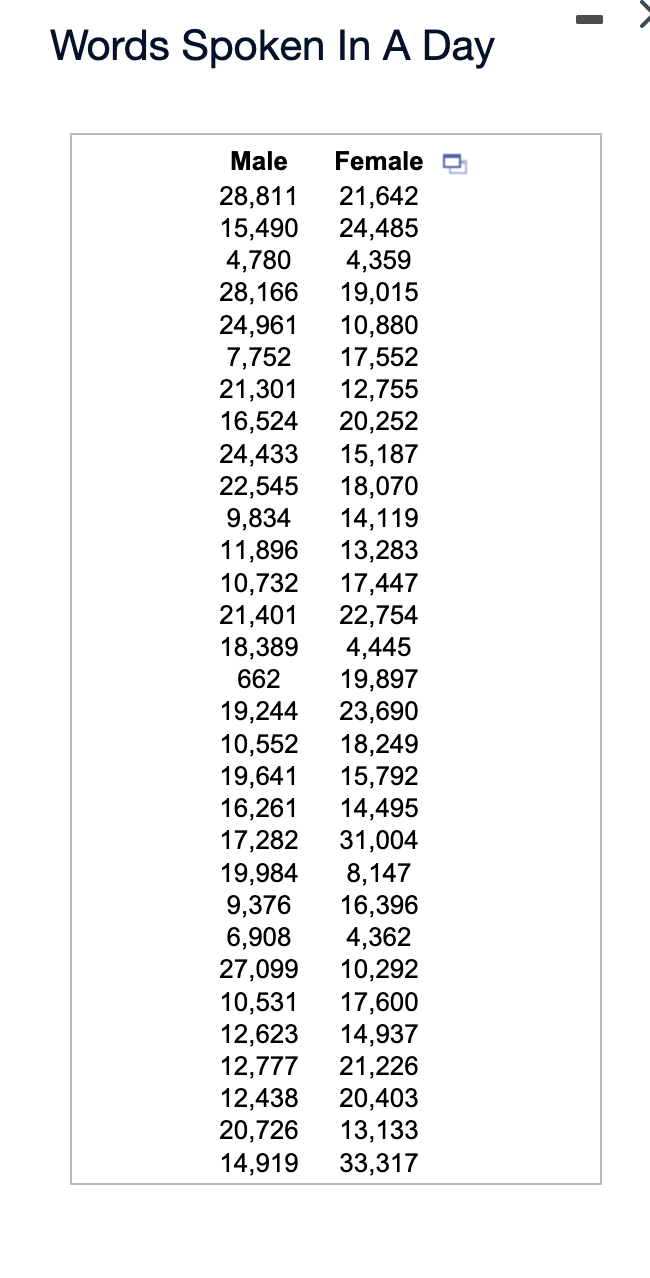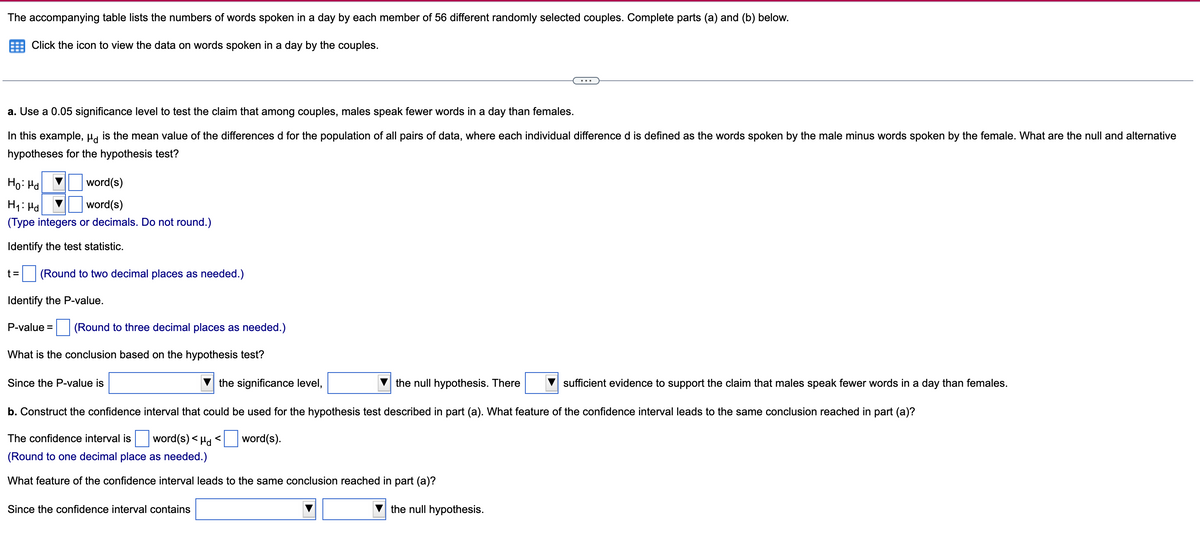Words Spoken In A Day Male Female 28,811 15,490 4,780 28,166 24,961 7,752 21,301 16,524 24,433 22,545 9,834 11,896 10,732 21,401 18,389 21,642 24,485 4,359 19,015 10,880 17,552 12,755 20,252 15,187 18,070 14,119 13,283 17,447 22,754 4,445 662 19,897
Words Spoken In A Day Male Female 28,811 15,490 4,780 28,166 24,961 7,752 21,301 16,524 24,433 22,545 9,834 11,896 10,732 21,401 18,389 21,642 24,485 4,359 19,015 10,880 17,552 12,755 20,252 15,187 18,070 14,119 13,283 17,447 22,754 4,445 662 19,897
Glencoe Algebra 1, Student Edition, 9780079039897, 0079039898, 2018
18th Edition
ISBN:9780079039897
Author:Carter
Publisher:Carter
Chapter10: Statistics
Section10.4: Distributions Of Data
Problem 19PFA
Related questions
Question
12.

Transcribed Image Text:Words Spoken In A Day
Male
Female
28,811
15,490
4,780
28,166
24,961
7,752
21,301
16,524
24,433
22,545
9,834
11,896
10,732
21,401
18,389
21,642
24,485
4,359
19,015
10,880
17,552
12,755
20,252
15,187
18,070
14,119
13,283
17,447
22,754
4,445
19,897
23,690
18,249
15,792
14,495
31,004
662
19,244
10,552
19,641
16,261
17,282
19,984
9,376
6,908
27,099
10,531
12,623
12,777
12,438
20,726
14,919
16,396
4,362
10,292
17,600
14,937
21,226
20,403
13,133
33,317

Transcribed Image Text:The accompanying table lists the numbers of words spoken in a day by each member of 56 different randomly selected couples. Complete parts (a) and (b) below.
Click the icon to view the data on words spoken in a day by the couples.
a. Use a 0.05 significance level to test the claim that among couples, males speak fewer words in a day than females.
In this example, µa is the mean value of the differences d for the population of all pairs of data, where each individual difference d is defined as the words spoken by the male minus words spoken by the female. What are the null and alternative
hypotheses for the hypothesis test?
Ho: Hd
word(s)
H1: Hd
word(s)
(Type integers or decimals. Do not round.)
Identify the test statistic.
t =
(Round to two decimal places as needed.)
Identify the P-value.
P-value =
(Round to three decimal places as needed.)
What is the conclusion based on the hypothesis test?
Since the P-value is
the significance level,
the null hypothesis. There
sufficient evidence to support the claim that males speak fewer words in a day than females.
b. Construct the confidence interval that could be used for the hypothesis test described in part (a). What feature of the confidence interval leads to the same conclusion reached in part (a)?
The confidence interval is
word(s) < Hd
word(s).
(Round to one decimal place as needed.)
What feature of the confidence interval leads to the same conclusion reached in part (a)?
Since the confidence interval contains
the null hypothesis.
Expert Solution
This question has been solved!
Explore an expertly crafted, step-by-step solution for a thorough understanding of key concepts.
Step by step
Solved in 4 steps with 4 images

Recommended textbooks for you

Glencoe Algebra 1, Student Edition, 9780079039897…
Algebra
ISBN:
9780079039897
Author:
Carter
Publisher:
McGraw Hill

Glencoe Algebra 1, Student Edition, 9780079039897…
Algebra
ISBN:
9780079039897
Author:
Carter
Publisher:
McGraw Hill